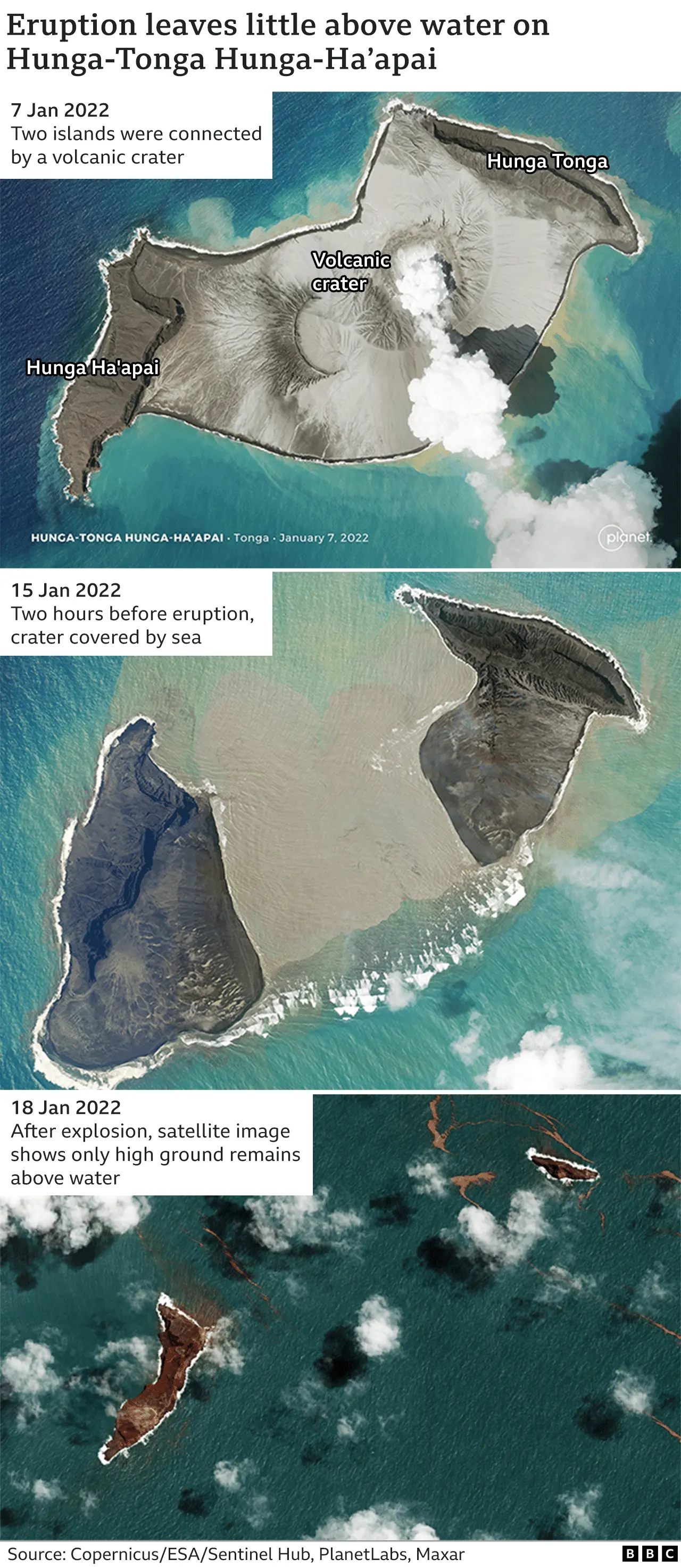NZ professor snorkels over Tonga volcano
 Bronco Sugar
Bronco SugarWhat an experience! New Zealand Prof Shane Cronin has just returned from snorkelling over the Tonga underwater volcano that blew its top in January.
He wanted to get a closer look at Hunga-Tonga Hunga-Ha'apai (HTHH), and to gather some rock samples.
The seamount produced one of the fiercest volcanic explosions in more than a century on 15 January.
It sent a plume of ash and vapour halfway to space and generated a tsunami that swept across the Pacific.
The event touched literally every corner of the globe as atmospheric waves spread out in all directions to complete a full circumnavigation.
Activity at the volcano has now abated, which allowed the University of Auckland scientist to get in close on a small boat with Tongan locals Dee and Bronco Sugar.
Before the event, the rim of the volcano's caldera, or opening, reached just above the waves, forming two connected islands - the larger edifice called Hunga-Ha'apai and the smaller one known as Hunga-Tonga.
These protrusions are still present, although dramatically reduced in size. Prof Cronin swam around them, diving down to pick up some rocky debris.
"It was pretty cool," he told BBC News. "The water was really clear and gorgeous to swim in. I saw the first barnacles starting to grow on the volcanic rocks and there were angelfish and a few other small fish. Dee saw a small barracuda. There was no sign of volcanic [activity]."
- Listen to Prof Shane Cronin describe his field studies in Tonga on the Science In Action programme on the BBC World Service
Allow X content?
Prof Cronin has been in Tonga this past month, making observations that will help him better understand what happened in January. (See his posts on Twitter)
He's been travelling around the Pacific nation's main island, Tongatapu, collecting ash samples and examining tsunami sand deposits.
He's also talking to residents, looking at their videos and photographs, and recording their eyewitness accounts.
The scientist is building a detailed timeline for the eruption and the tsunami that accompanied it.
He says it looks like there were four distinct water waves. Two smaller waves came before a larger one ran up shores to at least 15m above sea-level.
He explained: "And then by looking at the deposit evidence, so digging down through the tsunami deposits and seeing how they intercalate with ash deposits, I think there was another one that came later, a smaller one, probably about four hours after the first three."
Allow X content?
Prof Cronin hopes to land on the two HTHH remnants at some point as part of his survey work.
His assessment will also be greatly assisted by the flotilla of research vessels heading for the volcano, including a British robot boat that will spend a month over the top of the caldera.
The flotilla will map the shape of the underwater mountain to see how it has changed. The suspicion is a portion of the volcano's flank or part of its caldera wall collapsed to trigger the tsunami.
"This eruption produced the largest ash column that's ever been measured on satellite data and very large atmospheric pressure waves that travelled around the Earth. It really was a spectacularly big event," said Prof Cronin.
"And because most of the evidence is underwater, there needs to be these boat studies, as well as the studies I'm doing on land, to try to understand just what went on in this event, and then (ask) what this means for the literally hundreds of other volcanoes of this similar type and similar depth below sea-level - what is the potential for them to produce deadly eruptions?"


